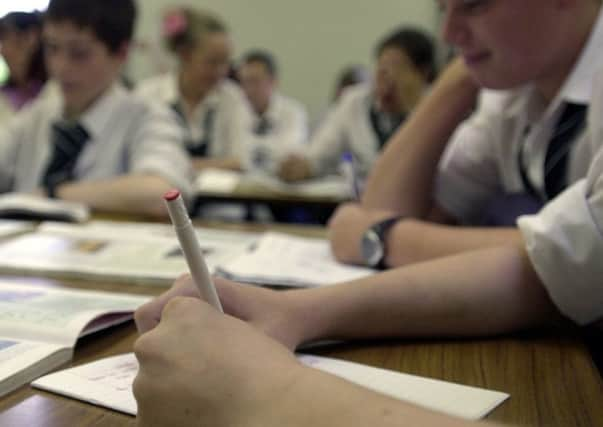‘Most academy chains coasting’


The Sutton Trust, a think tank which aims to improve social mobility through education, compiled the Chain Effects 2015 report, comparing the performance of disadvantaged students in academies and other state-funded schools between 2012 and 2014.
The research, carried out by Professor Merryn Hutchings, Professor Becky Francis and Dr Philip Kirby, suggests that disadvantaged students in 11 of the 34 academy chains which were studied were outperforming the average for all state-funded schools.
Advertisement
Hide AdAdvertisement
Hide AdThe research found that in the best performing chains, the proportion of disadvantaged students achieving five good GCSEs (A* to C) was around 15 percentage points higher than the average for disadvantaged students.
The research also discovered that disadvantaged students in 17 of the 34 chains improved faster than the national average from 2012 to 2014 when all performance measures were considered.
Education Secretary Nicky Morgan recently defined ‘coasting’ schools as those that consistently fail to ensure 60 per cent of their pupils achieve five good GCSEs, including English and Maths.
And she said that to improve their results, coasting schools would face being converted into academies in the future.
Advertisement
Hide AdAdvertisement
Hide AdBut 44 per cent of the individual academies analysed in the Sutton Trust study were below the Government’s new ‘coasting’ level in 2014 and 26 of the 34 chains had at least one coasting school.
Academies are schools run by charities or businesses and paid for directly by central government rather than local councils.
Sutton Trust chairman Sir Peter Lampl said: “Many chain sponsors, despite several years in charge of their schools, continue to struggle to improve the outcomes of their most disadvantaged students.”
The trust is urging the Government to include a measure of attainment for disadvantaged pupils in its new criteria for coasting schools.
Advertisement
Hide AdAdvertisement
Hide AdThe study identified attainment measures including the percentage of disadvantaged students achieving A* to C at GCSE or equivalent (including English and Maths), the percentage making expected progress in English and Maths and performance in the English Baccalaureate (EBacc).
Nansi Ellis, of the Association of Teachers and Lecturers (ATL), said: “This report confirms the Government’s own recent evidence that in nine of the 20 larger chains, pupils made significantly below average progress. It also shows that only 10 of the 100 larger local authorities performed as badly.”
A Department for Education spokesman said: “It is wrong and misleading to try to classify coasting schools based on 2014 data alone. A coasting school can only be identified based on performance over three years, so we won’t know until 2016 which schools they will be. The academies programme has transformed the lives of millions of pupils, particularly those from disadvantaged backgrounds, as this report shows.”
Tristram Hunt MP, Labour’s shadow education secretary, said: “David Cameron’s first Education Bill of this parliament does not contain a single concrete measure for tackling under-performance in academy schools, despite the fact that more than half of all secondary schools are academies.”